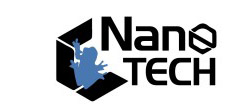DISEÑO, FABRICACIÓN Y CARACTERIZACIÓN DE NANODISPOSITIVOS ELECTRÓNICOS BIDIMENSIONALES
La mayor parte de las contribuciones de la comunidad científica española en el campo del grafeno se ha centrado en el estudio de sus propiedades fundamentales. Estas propiedades únicas del grafeno son las que permitirán el diseño de tecnologías verdaderamente disruptivas. Sin embargo, son más escasas las propuestas concretas que pretenden explotar estas propiedades singulares. Para llevarlas a cabo es necesario contar con grupos multidisciplinares que combinen los esfuerzos teóricos y los experimentales, aprovechando tanto la experiencia teórica acumulada como las importantes inversiones realizadas en los últimos años en infraestructuras científicas que permiten la fabricación, el procesado y la detallada caracterización de los nanodispositivos de grafeno. Y es precisamente aquí donde incide nuestra propuesta. Sin abandonar otros materiales más convencionales, pretendemos además diseñar, fabricar y caracterizar, tanto mediante modelos analíticos y numéricos como en el laboratorio, diversos nanodispositivos para la electrónica basados en heteorestructuras de grafeno y nitruro de boro hexagonal (h-BN), estudiando tanto transistores FET, como anillos cuánticos y superredes, que se supone presentan comportamiento análogos a los transistores y resistencia diferencial negativa, respectivamente. El rendimento y propiedades de estos dispositivos se compararán con sus homólogos basados en otros materiales novedosos (por ejemplo, MoS2) como más convencionales, y de ahí que nuestra propuesta no se circunscriba exclusivamente al ámbito del grafeno. Por ello, también centraremos nuestra atención en los semiconductores convencionales e incluso sistemas moleculares, como base para nuevos nanodispositivos ópticos y electrónicos. La sinergia entre grupos de investigación en la Universidad de Salamanca (con investigadores del Laboratorio de Bajas Temperaturas y del Grupo de Física No Lineal) y en la Universidad Complutense de Madrid (con investigadores del Grupo de Nanosistemas Cúanticos, de las áreas de Física Aplicada y de Ciencia de Materiales e Ingeniería Metalúrgica) permitirá alcanzar los retos e hitos que proponemos. Los logros que alcancemos serán de interés no sólo para la Ciencia Básica sino que también tienen proyección industrial, como lo muestran las cuatro empresas españolas pioneras en el campo que apoyan nuestra propuesta.
Objetivos
- Objetivo 1: Diseño y modelización de nanodispositivos basados en materiales bidimensionales (grafeno, h-BN y MoS2).
- Responsable: Francisco Domínguez-Adame
- Participantes: José María Cerveró, Pilar García , Juan D. Lejarreta , Andrey Malyshev , Marta Saiz , Cristina Sardón
- Objetivo 2: Fabricación y caracterización de nanodispositivos basados en materiales bidimensionales (grafeno, h-BN y MoS2).
- Responsable: Enrique Diez Fernández
- Participantes: Vito Clerico , Cayetano Cobaleda , Sergio Pezzini , Cristina Hernández , – Vittorio Bellani
- Objetivo 3: Estudio experimental del efecto Hall cuántico en grafeno y en gases de electrones bidimensionales en intercaras de semiconductores III-V
- Responsable: Enrique Diez Fernández
- Participantes: Vito Clerico, Cayetano Cobaleda , Sergio Pezzini , Vittorio Bellani
- Objetivo 5: Diseño y modelización de dispositivos optoelectrónicos basados en nanoantenas (nanopartículas metálicas) en proximidad de intercaras de semiconductores y dieléctricos.
- Responsable: Andrey Malyshev
- Participantes: Andrey Bogdanov , Enrique Díez, Vito Clerico , Vittorio Bellani
- Objetivo 6: Modelización del transporte de espín en moléculas de ADN.
- Responsable: Elena Díaz García
- Participantes: Francisco Domínguez-Adame , Christopher Gaul , Pilar García , Cristina Sardón
DESIGN, FABRICATION AND CHARACTERIZATION OF TWO-DIMENSIONAL ELECTRONIC NANODEVICES
Most of the contributions of the Spanish scientific community in the field of graphene has been focusing on the study of its fundamental properties. These unique properties are believed to be underlying for novel breakthrough technologies. However, proposals that seek to exploit these properties are quite scarce. Multidisciplinary groups that combine theoretical and experimental efforts are needed to carry them out using both solid theoretical background and infrastructures capable of the fabrication, processing and characterization of new nanodevices. The present proposal aims to fill this gap between basic and applied science in the field of nanodevices based on graphene hexagonal boron nitride (h-BN) heterostructures and other novel materials (such as MoS2), as well more conventional ones. We intend to design, fabricate and characterize various electronic devices, such as h-BN/graphene FET transistors, graphene quantum rings and superlattices, which can operate as transistors and negative differential resistance diodes, respectively. Their performance will be compared to that of their counterparts based on more traditional materials. We will also consider conventional semiconductors and molecular systems as a basis for new optical and electronic nanodevices. The synergy between research groups from the University of Salamanca (Nanotechnology group) and the Complutense University of Madrid (the Quantum Nanosystems Group, working in the areas of Applied Physics and Material Science) has all necessary components to successfully address the challenges of our proposal. We believe that the proposal will have benefits not only for the fundamental research but also for industrial applications, as suggested by four Spanish pioneering enterprises in the field of nanofabrication, who support our proposal.
Objectives
- Objective 1: Design and modeling of nanodevices based on two-dimensional materials (graphene, h-BN and MoS2).
- Person responsible: Francisco Domínguez-Adame
- Participants: José María Cerveró, Pilar García , Juan D. Lejarreta , Andrey Malyshev , Marta Saiz , Cristina Sardón
- Objective 2: Manufacture and characterization of nanodevices based on two-dimensional materials (graphene, h-BN and MoS2).
- Person responsible: Enrique Diez Fernández
- Participants: Vito Clerico , Cayetano Cobaleda , Sergio Pezzini , Cristina Hernández , – Vittorio Bellani
- Objective 3: Experimental study of the quantum Hall effect in graphene and two-dimensional electron gases in semiconductor interfaces III-V
- Person responsible: Enrique Diez Fernández
- Participants: Vito Clerico, Cayetano Cobaleda , Sergio Pezzini , Vittorio Bellani
- Objective 5: Design and modeling of optoelectronic devices based on nanoantennas (metallic nanoparticles) in the vicinity of semiconductor and dielectric interfaces.
- Person responsible: Andrey Malyshev
- Participants: Andrey Bogdanov , Enrique Díez, Vito Clerico , Vittorio Bellani
- Objective 6: MModeling of spin transport in DNA molecules.
- Person responsible: Elena Díaz García
- Participants: Francisco Domínguez-Adame , Christopher Gaul , Pilar García , Cristina Sardón

